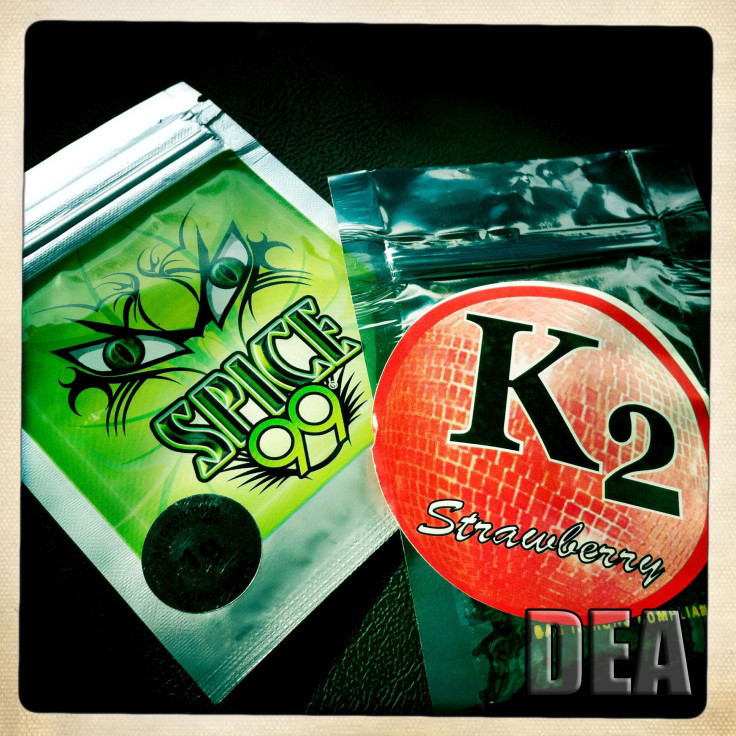'Spice' Drug Effects: Synthetic Marijuana Unpredictably Dangerous, Even Deadly, Experts Say, As Hospitalizations Rise

Early last week in the emergency room of Forrest General Hospital in Hattiesburg, Mississippi, a male patient, about 30 or so years old, came in. He was agitated and hearing voices, and was eventually admitted to the hospital’s psychiatric unit. There, things erupted.
The young man became paranoid, screaming that people were trying to break in and kill him. He started kicking at a set of double doors, made of solid wood, and broke them down. He reached another set of doors, and broke the glass in those, too, recalled Dr. Peter Kamp, a psychiatrist at Pine Grove Behavioral Health and Addiction Services in Hattiesburg. Although his behavior appeared to suggest otherwise, the young man had no history of psychiatric illness. Instead, he had taken "spice," a synthetic drug. “It was all clearly drug-related,” Kamp said.
The recent rise of overdoses and deaths from synthetic cannabinoids, often known by slang names like "spice," "K2" or "black mamba," has alarmed health officials throughout the United States. Users aren’t aware of how exceedingly dangerous these drugs are, experts say, and because their chemical compositions are constantly changing, the drugs are a public health nightmare -- it’s impossible to predict how a person’s body will react to spice or what doctors should do if something goes wrong.
“The people in the emergency rooms don’t know what to test for,” said Dr. Eric Wish, director of the Center for Substance Abuse Research at the University of Maryland and a researcher on synthetic cannabinoids. “When you tweak a molecule, you don’t know how it’s going to affect the brain. It’s a huge problem for public health.”
Spice is essentially plant matter sprayed with a chemical that has been engineered to mimic the effects of THC, the active ingredient in marijuana. Users can smoke it or ingest it. However, because the chemical can vary from batch to batch, so can the drug’s effects – and the body’s reaction to it. It changes because every time the U.S. Drug Enforcement Administration classifies a new compound as illegal, manufacturers alter the molecule slightly, so that it still gets users high but within the confines of the law. Other chemicals – even toxins like rat poison, some suggest – can also wind up in the mix.
The drug’s unpredictability, however, has failed to deter users, as reports of adverse effects skyrocketed this year. The nearly 2,000 phone calls made so far in 2015 to U.S. poison control centers because of these drugs is quadruple the number of calls in all of 2014, the American Association of Poison Control Centers said Thursday. Meanwhile, individual states have also reported surges in hospital visits because of synthetic cannabinoids. Alabama saw 462 hospital visits from March 15 through April 20 from spice. Of those, 96 people were ultimately hospitalized. Two of them died.
Kamp, the psychiatrist, said that just in the past month, he’s seen some unusual reactions to spice – far more agitation, paranoia and violence than users have shown in the past. “This is new and different,” he said.
The chemicals used in synthetic cannabinoids are typically produced in foreign countries, mainly China, according to Jill Head, a senior forensic chemist with the U.S. Drug Enforcement Agency. They’re then brought into the United States, where they’re mixed with acetone and sprayed onto plant material before being packaged for sale at convenience stores and gas stations, as well as on the Internet.

“A user could never know exactly what they’re taking,” Head said. “What we’ve seen is that once a particular compound or drug is controlled, whoever is making the formulation for the new one is aware of that, and changes the molecule just so, so that it remains active in the body.”
According to Wish, it can be hard for public health officials, as well as law enforcement, to keep up with drugmakers. “It changes so quickly that oftentimes, the tests aren’t even available to even identify” whether a person has used a form of spice or not, he said. DEA officials estimated that there are hundreds of chemical compounds that can be used in synthetic cannabinoids, yet tests exists for a mere fraction of those.
In Alabama, when patients arrive in hospitals with possible signs of a spice overdose, doctors are rarely able to use drug tests to confirm their suspicions. “You would have to take samples and send them out of state,” said Dr. Jim McVay, the health department spokesman. “You’re talking about a lengthy process to try to decide what made this person sick. These are not easily detected substances.” The state has banned more than 40 chemicals that are characterized as synthetic cannabinoids, he added.
One evening in mid-April, Austin McCloud, an 18-year-old senior in high school in Sioux City, Iowa, went out with a few friends, and they smoked K2, as spice is also known. At 11 p.m. that night, police got a call. Three of the boys ended up in the hospital, but for McCloud, who was unresponsive when the police arrived at the scene, it was too late. The next day, April 17, he passed away, just weeks before he would have graduated from high school.
“It sounds mild: ‘You’re just smoking spice, there’s nothing to this,’” McVay noted. That idea, he said, was a lie. “Organs can start shutting down. People are using it and don’t think it’s dangerous.”
© Copyright IBTimes 2024. All rights reserved.





















